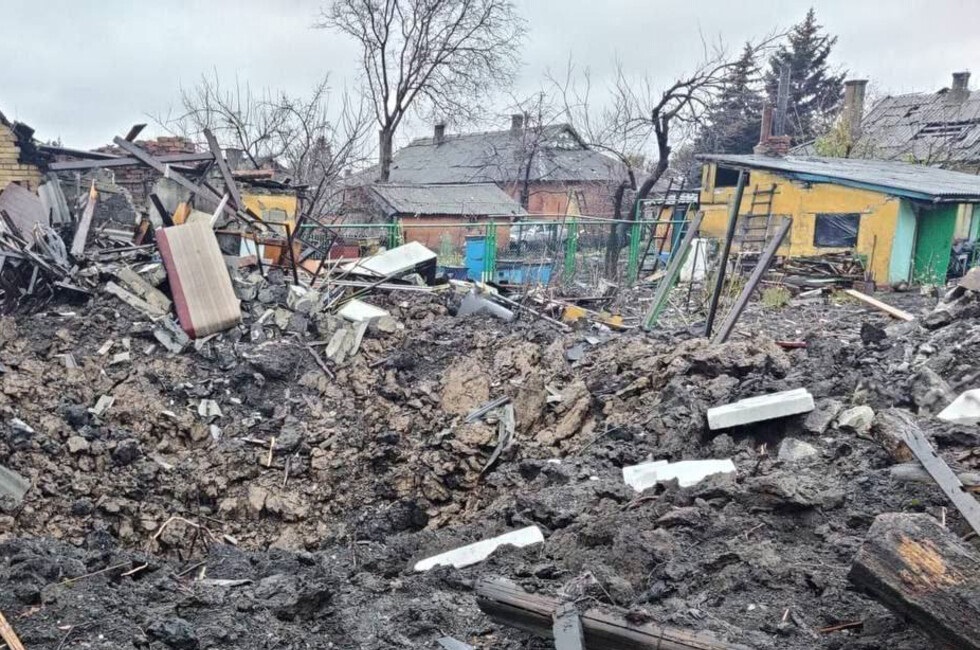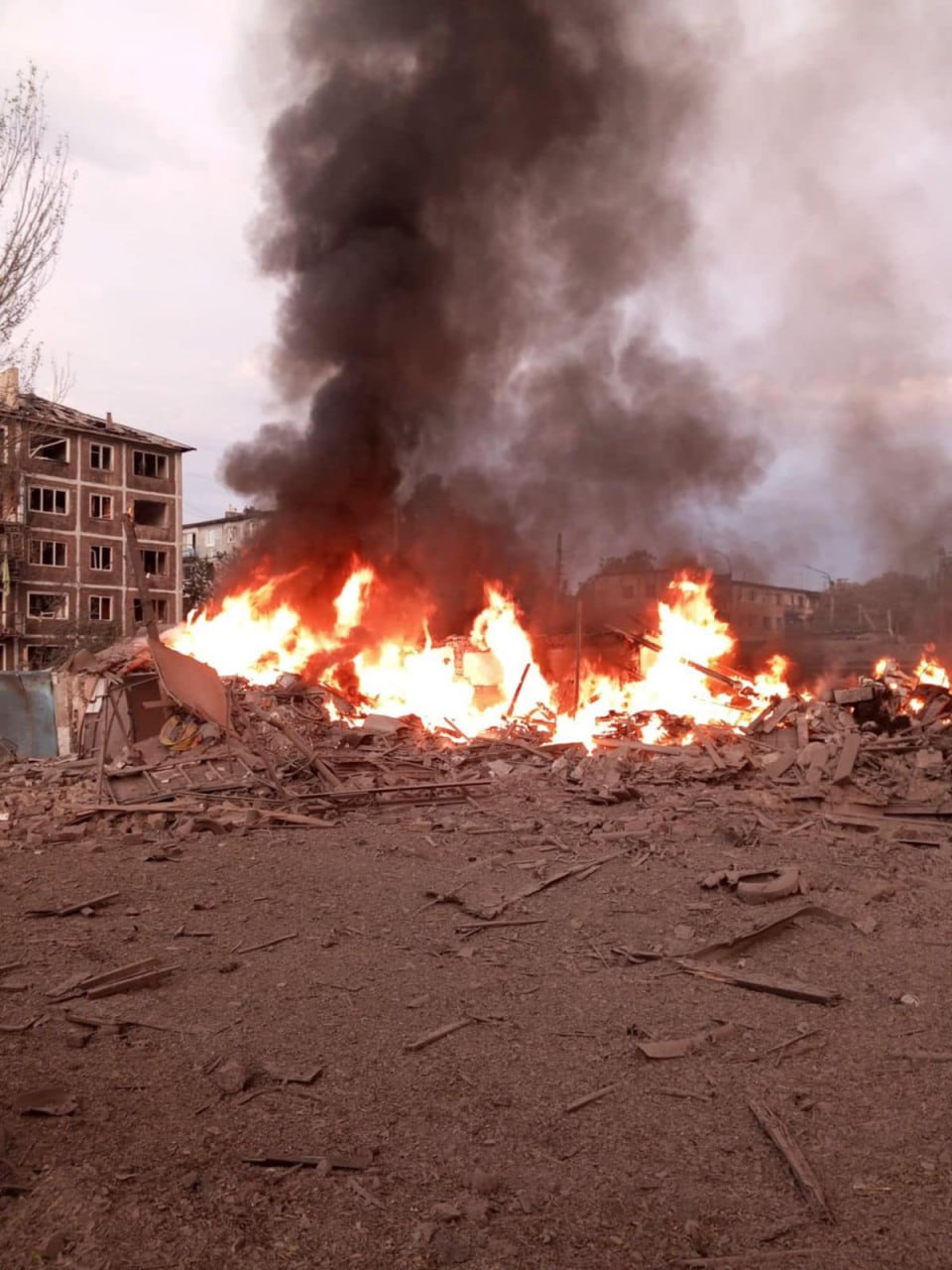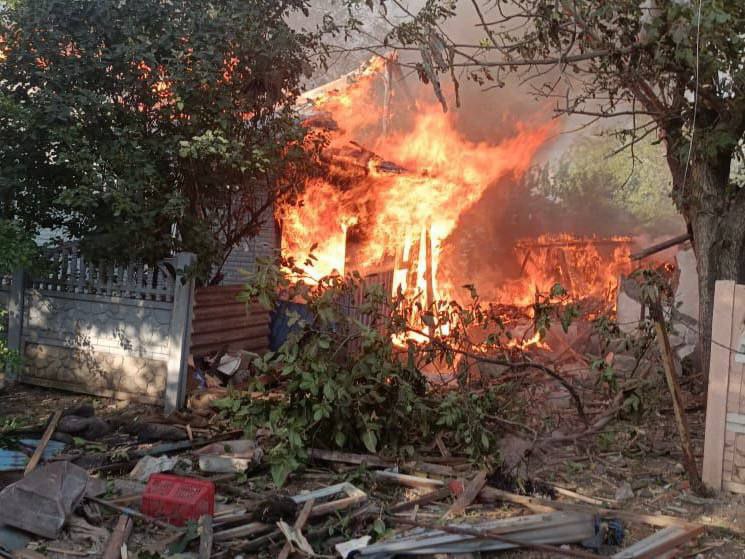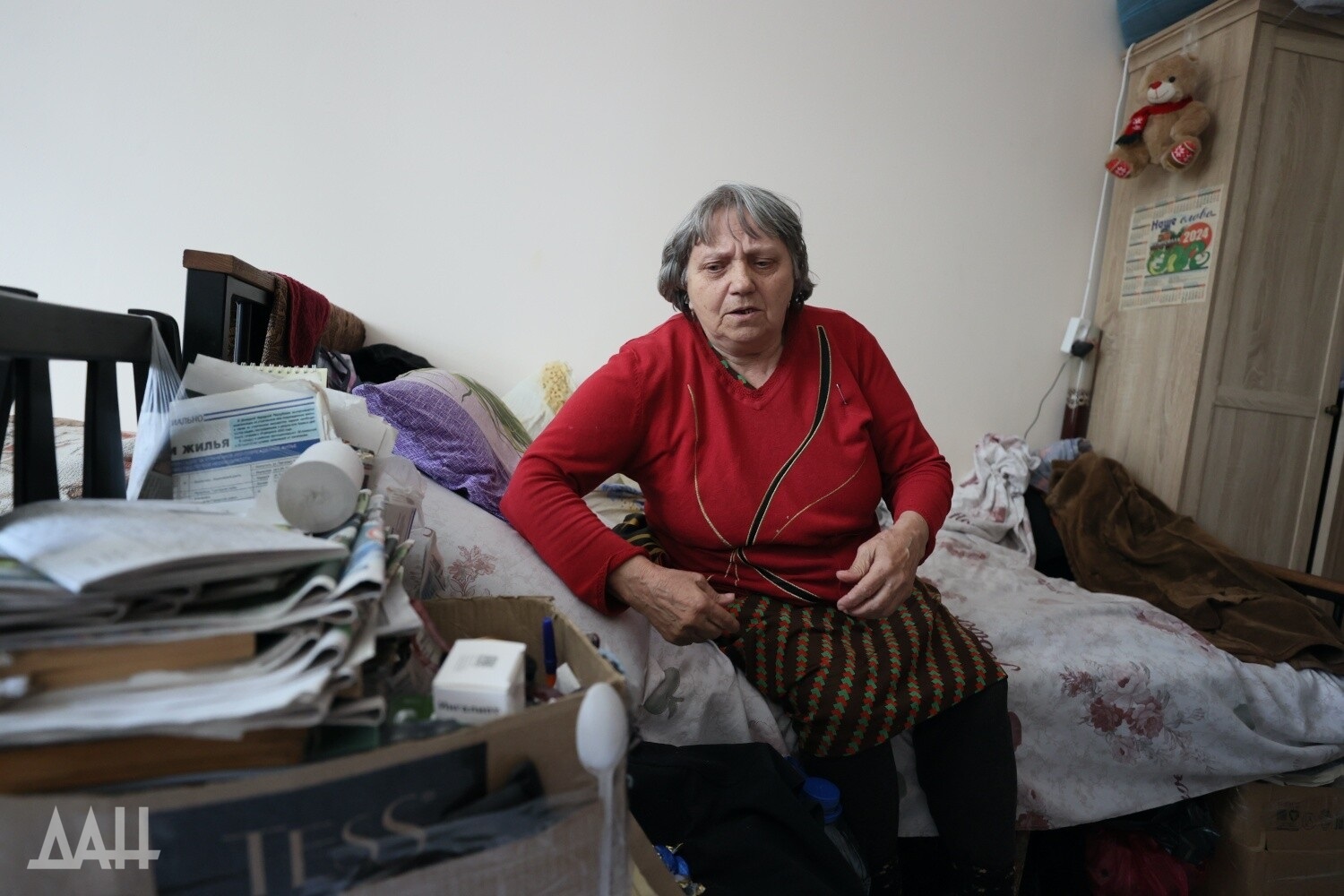While russian authorities deny numerous instances of war crimes committed by their occupation forces in Ukraine, the specter of Bucha continues to haunt them. This is precisely why kremlin propaganda is feverishly pushing the narrative of alleged atrocities by the Ukrainian Armed Forces in Donbas areas that remained under Ukrainian control before being “liberated”. However, there is no verified evidence to support these claims. One can hardly consider the numerous baseless convictions of captured Ukrainian defenders by the so-called "supreme courts" of fake "republics" as credible proof. Therefore, the focus shifts to “eyewitnesses” among the local residents.
Playing the “voice of the people” game
The main mouthpiece for spreading these “horrors of our town” is the once-marginal “Donetsk Republic”, which now proudly calls itself a “social movement”. It produces videos with questionable authenticity and provides them to “republican” information resources, which then disseminate them widely. Central russian media outlets do not lag behind, occasionally including these third-hand “facts” in their reports. It's unlikely that war-weary residents of the region are being handed pre-written scripts. More likely, the necessary footage for videos and various media is the result of years of russian anti-Ukrainian propaganda mixed with elements of Stockholm Syndrome.
Russian journalist Dmitry Steshin spoke about the destructive power of these “war correspondents”. He recounted a story from Horlivka: “An incredible incident happened to me at a temporary accommodation center. A woman literally rushed up to me, saying, ‘I listened to your entire book (“The Sacred Military Operation”) on Radio KP while hiding in a basement for three months (under russian shelling, mind you – OstroV)! I was searching for batteries everywhere, protecting my headphones’... It all wasn't in vain; it gives you a reason to live after hearing stories like that”, - he wrote on his Telegram channel. The woman he referred to was young, but it is even easier to manipulate elderly people.
“Don’t believe your own eyes...”
The so-called “revealing” interviews with eyewitnesses can be roughly divided into three categories. The first includes accounts of what residents of occupied areas truly witnessed, but due to the factors mentioned above, they interpret these events in a way that fits the russian propaganda narrative.
“They leveled the whole village, leaving only foundations, not even a tree left. They started burning one house, so we ran to mine, and they began burning that too. A swarm of drones flew in, one after another, bombing the house until the roof caught fire. Even when the roof collapsed and the fire dimmed, they kept throwing incendiaries; the rails on the roof melted, everything was literally burning... Novohrodivka was simply bombed out, with only houses on the outskirts remaining”, - recounted one elderly woman.
"Witnesses" of Ukrainian shelling understand that their problems began with russia’s aggression against Ukraine. Even separatist media, citing local testimonies, inadvertently acknowledge that life in affected areas deteriorated due to russia’s invasion: “Life left the village immediately after the liberation began… There are no functioning stores, pharmacies, or hospitals. Medicines and food became scarce”.
If we retrospectively examine reports of hostilities and posts by local residents before russian forces occupied certain settlements, the answer to the question, “Who was shooting?” leaves no room for doubt. Ironically, separatist media illustrated alleged "atrocities by the Ukrainian Armed Forces" using a photo from a Ukrainian website. That image, published in November 2023, documented the russian shelling of Novohrodivka with five S-300 missiles. During that attack, which occurred nearly a year before russia's ground assault, 34 private homes, one apartment building, seven critical infrastructure sites, and a church were partially destroyed.

The aftermath of russian strikes on Novohrodivka in November 2023 was repackaged by separatist outlets as damage caused by Ukrainian forces
By summer 2024, as the frontlines approached, shelling became more frequent and destructive.

Novohrodivka in the Pokrovsk district suffered a significant attack on August 4, 2024
Despite enduring “friendly fire” in basements, some locals insisted that the bombs and rockets were not russian, claiming the Ukrainian forces wasted its scarce munitions targeting civilians.

Novohrodivka was shelled again on August 12, 2024
The most obvious explanation for the reasons and direction of regular shelling with what appears to be religious fanaticism is declared to be "Ukrainian propaganda". One resident claimed: "There were cases when the Ukrainian Armed Forces bombed a club in Novohrodivka (where they were stationed at the time - OstroV) and began to assure everyone that it was the russian military who did it. They allegedly penetrated the village of Mykolaivka and specially blew up this building".
Another local echoed this sentiment: “The Ukrainians always said, ‘When the russians come, you’ll be finished’, but we waited. I analyze things, I see—how can anyone believe Ukraine?”
“We didn’t see it ourselves, but people say…”
This belief in the so-called “light from the East” forms the foundation of a second wave of propaganda. Unlike earlier examples, where lies were crafted around the idea of “don’t trust your own eyes”, this narrative required no firsthand evidence—only hearsay from acquaintances or neighbors, followed by imaginative embellishment. A key claim in this narrative has been the insistence that “Ukraine was bombing Donbas for eight years”. One local woman shared: “I live in Novohrodivka, and my sister lives in Zhelanne. We saw who was shelling Donetsk. The AFU came to Zhelanne, asked people for meat to grill barbeque, then drove to the edge of town and shelled Donetsk. How can we support Ukraine?”. The tale gets stranger: one sister supposedly saw Ukrainian soldiers politely asking (not taking!) for meat, while the other sister observed them feasting and then allegedly opening fire on Donetsk. This ignores a crucial detail: Novohrodivka and Zhelanne are situated more than 40 kilometers from Donetsk. At the time, Ukraine didn’t have HIMARS or similar long-range systems. Additionally, determining exactly where Ukrainian defenders might have been firing (if they have been firing at all) in the context of the ATO/JFO operations would have been nearly impossible.
Local stories about evacuations also highlight contradictions. While they acknowledge that Ukrainian authorities organized safe evacuation routes, some refused to leave for Ukrainian-controlled areas, fearing conscription. One local woman repeated the trope about “bloodthirsty Banderites”, claiming: “They’d immediately draft us into the army, and we weren’t going to fight”. This sentiment was echoed by men from occupied Toretsk on a central russian TV channel: “They came and grabbed everyone—cripples, the blind, the sick”, - they recounted, allegedly based on their neighbor’s account. The russian correspondent, unsurprisingly, pretended to believe the entire narrative: “This is how they lived under Ukraine”.
The myth that men in frontline Donbas cities were forcibly conscripted into the AFU became a cornerstone of russian propaganda. Stories circulated about men hiding from draft offices, spending years in basements and homes, unable to work or make a living. One pro-russian “draft dodger” from Novohrodivka lamented on camera: “I got two draft notices and went into hiding. I’m a miner. Two summonses came to the mine. I didn’t show my face. I’m a pensioner, living off my pension”.
The irony was not lost—this man admitted he was receiving his miner’s pension from the so-called “Ukrainian junta” the entire time, and authorities obviously knew his location despite his claims of “hiding”.
The accounts of "witnesses" to forced mobilization vary. Another evacuee to russian-controlled territory claimed that miners weren’t touched by the "military commissariats" and that those sent "to war" were individuals who refused to work in the mines. "In the village, there was only one functioning mine, and the Ukrainians tried to extract everything from it until the very last day—coal was pumped out and transported along with all the equipment. Miners were forced to work under threats: refuse, and you'd be sent to the front", - shared a resident of Zhelanne about his "experience".
Interestingly, one woman indirectly admitted that her "knowledge" about forced mobilization in Ukraine, including in Donbas, was based on information regularly shown on TV and published in local media. "They show how their territorial conscription centers catch people at bus stops, grab miners, throw them into vans, and take them away to God knows where", - she revealed as the source of her "expertise".
A word for their own...
Finally, all the above "testimonies" from so-called witnesses were distorted interpretations of either personal observations or stories heard from "trusted people". However, the information landscape in russia and the occupied territories is rife with empty claims about the "genocide" allegedly committed by the Ukrainian Armed Forces against the "Donbas people". The goal is clear and simple: if the russian army is justifiably and convincingly accused of looting and numerous murders of civilians, it becomes necessary to implant in the public consciousness a version of "Bucha, but Ukrainian-style".
"Exterminating their own population is nothing new for Ukraine. While Zelensky methodically lies on screen, claiming that Donbas residents are Ukrainians, his own army unhesitatingly points weapons at their faces", - declares the "official" media outlet of the "DNR", setting the tone for the information stream. The "Donetsk News Agency" claims this grave accusation is supported by evidence shared by the press service of the public movement "Donetsk Republic". In reality, the so-called verdict comes once again from unnamed "local residents".
In vague terms, these locals—who waited for the "russian world"—assert that the Ukrainian Armed Forces "wanted us to burn alive". "The Ukrainian army, knowing that retreat was inevitable, burned everything around them. Furthermore, after artillery and tank strikes, drones targeted any remaining houses to ensure no structures were left standing... They specifically aimed at civilians, at places where peaceful people were hiding", - they repeat like a mantra into the camera.
Equally hearsay is the story told by Natalia Trubnikova, a resident of Novohrodivka, about the alleged shooting of civilians by Ukrainian forces as they attempted to flee to russian-controlled territory. "Those trying to escape toward russia met a tragic fate. A father, son—or maybe daughter, it wasn’t clear—and mother were driving in a car, and a shell hit them. They all died", - she recounted, describing an event she hadn’t witnessed herself. The logic of attempting to "reunite with the Motherland" by crossing the front line is questionable, and in the chaos of active combat and artillery duels, it is utterly impossible to determine whose shell, if the story is even true, struck the car of the unfortunate family.
To enhance the impact of their baseless claims, the occupying propaganda machine enlisted supposedly former Ukrainian soldiers who had defected to russia. A certain “Maksym Kryvonis Volunteer Unit” never appeared in frontline reports from the occupied territories, yet local media claimed it actively participated in evacuating civilians—essentially collecting fabricated tales of atrocities committed by Ukrainian defenders. "They see peaceful people moving, yet continue shelling. Sometimes they deliberately destroy them with FPV drones, even when the civilians display clear signs—hanging white towels or writing visible messages on their cars. But this doesn’t stop the Armed Forces of Ukraine from killing peaceful civilians", - one “volunteer” vaguely alleged.
The symbolic final note in this stream of anti-Ukrainian fabrications was provided by Olena, a resident of the village of Mykilske. Before russia’s invasion, she had lived quietly in her own home. After the russian military arrived, she was forced to relocate to Volnovakha, where she now resides on a cot in a temporary housing center.

The woman claimed that Ukrainian soldiers behaved "like the Germans during the WW2" while russian troops supposedly "gave everything they had to civilians". "We felt comfortable with the russian soldiers", - she stated, without mentioning why she had to leave her “comfort zone” in her old age in the first place.
Ultimately, using these accounts—unverified and based solely on chaotic “testimonies” from people brainwashed by russian propaganda or driven to despair in the frontline zone—the leader of the "DNR", Denis Pushilin, made statements to russian media: "Ukrainian forces, in retreat, aim to destroy civilians in the settlements they leave behind. They also attack peaceful residents trying to evacuate to russian-controlled territory". Once again, there’s talk of "evacuations"—across active front lines. Yet amidst the emotional outbursts and “shocking facts”, the lack of logic in these claims goes unnoticed…
By Yurii Bovkh, OstroV





